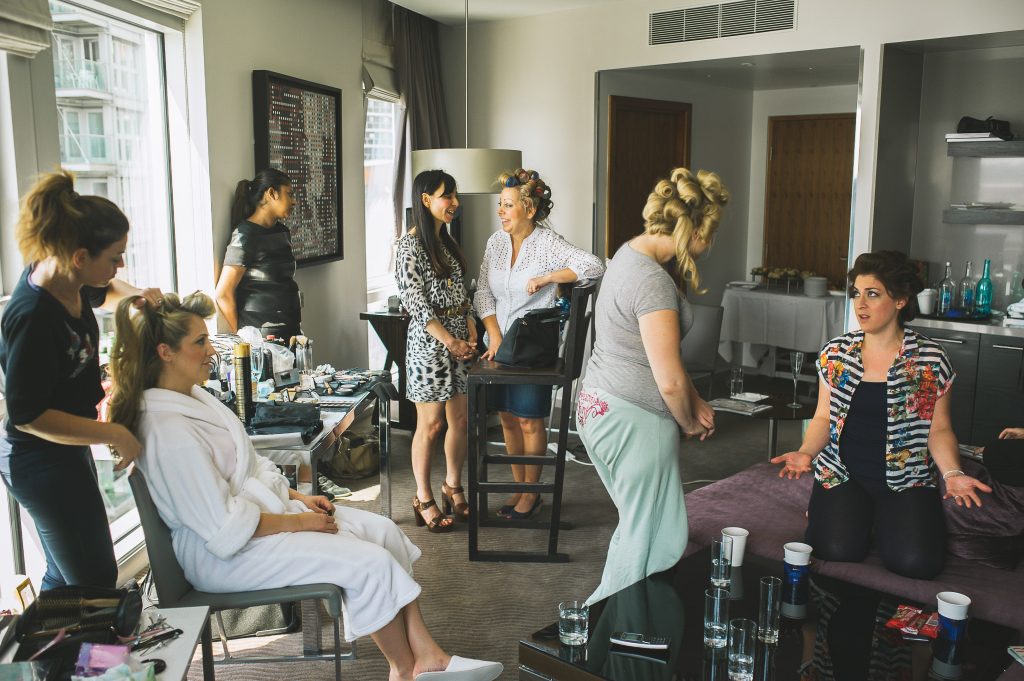The Photo Composition Breakdown
Professional photography is a fine art – and while art is by nature open to interpretation, that doesn’t mean there isn’t a formula for strong aesthetics. By understanding the rules of a ‘perfect’ shot – and knowing when to bend or break them – any amateur photographer can crack the composition code. Welcome to your photo composition cheat sheet, helping aspiring photographers to create some scientifically pleasing shots.
Share Tweet
The Rule of Thirds
The Rule of Thirds dictates where photographers should place their subject in a picture. Imagine your shot is divided into nine equal segments by two vertical and horizontal lines – photographic lore states that the most aesthetically pleasing compositions happen when your subject sits on these lines, or their intersections. Moving your subject off-centre makes for a more visually fascinating image – but don’t be a slave to the Rule of Thirds. You’ll know when the shot’s right.
Leading Lines
The eye instinctively follows lines – and by expertly placing natural lines in your shot, you can guarantee that all eyes are on your subject. The idea is to make sure that viewers have no choice but to look where they’re supposed to. By using walls, roads and buildings to lead the eye to your main focal point, you can control perspective and give your shot an exciting three-dimensional quality.
Framing
Another expert way to get eyes on a picture’s focal point is to use an aspect of your subject’s surroundings to ‘frame’ it, and subsequently draw attention to the right place. ‘Frames’ are easy to find in nature, with trees and archways working perfectly to isolate your subject from the rest of the image.
Aspect Ratio
You might be naturally drawn to take photos in either portrait or landscape mode 100% of the time – but to really do each one of your images justice, you’ve got to choose the aspect ratio that’s right for the scene at hand. If you’re looking to capture a wide shot of sweeping valleys and rolling hills, landscape’s your best bet – whereas portrait mode is ideal for up-close-and-personal people shots where the key is to eliminate any unnecessary background noise.
Layering
To photograph rural and urban landscapes to their full potential, you’ll need to think consciously about how to capture as much of the scene as possible – and that’s where layering comes in. Create a sense of depth in your photography by exploiting not only your subject but any background elements which help to produce an elaborate layered effect across the fore, middle and background. This is a more difficult image for the eye to make sense of, and therefore a more intriguing one.

Kristian Leven, kristianlevenphotography.co.uk
Visual Balance
By adhering to the ‘Rule of Thirds’, you can place your subject off-centre for an unlikely composition. The only problem with this is that you can be left with a large amount of negative space which can be jarring to look at. Keep the aesthetic equilibrium intact by balancing the ‘weight’ of your subject with another object for satisfying symmetry.
Negative Space
On the other hand, if you’ve got a taste for the unconventional, you can use that negative space to great effect. When working with a small subject, it’s easy to persuade yourself that the subject should occupy the entire shot – when, in fact, the composition can be infinitely more dramatic if you get creative and give your subject some room to breathe. This way, your photographs can say much more by saying much less.
Perspective
Pay particular attention to the angle from which you’re shooting your subject. For portraits, head-on can be great, but doesn’t offer anything unique or innovative. Experimentation is key, so try capturing your subject – whether it’s a portrait shot, landscape or whatever else – from an unconventional angle, giving your photo an extra dimension and a real sense of personal perspective.
Symmetry & Patterns
Whether man-made or natural – visual patterns make for beautiful images. By identifying patterns in your environment and making them a part of your composition, you can all but guarantee a visually stimulating photograph. Using symmetry, or rather asymmetry, to your advantage, you can give the image an even more complex and exciting result – and avoid distracting elements to keep all eyes on your expertly-composed shot.
Cropping
If you want your subject to get the attention it deserves, don’t give viewers any choice but to look at it. By cropping tightly around your chosen subject, you can eliminate any unnecessary distractions and create a composition that’s all about the focal point – guaranteeing the viewer’s undivided attention.
- The composition of an image ought to be dictated by the subject matter and the feel or mood you are trying to convey. For instance, if you want to convey loneliness, you could shoot a figure in a landscape showing a wide view of the context. Don’t put the figure dead centre though as it is more pleasing for the figure to be off-centre, perhaps a third of the way in from the edge of the frame. By the same token, if you are shooting an expressive face or a child with a cheeky expression, it makes sense to compose the image where the face is fairly prominent in the frame.
- Drama can be conveyed with close-ups, tight crops and low camera angles. Again, if this is the feel you are after, there is no point in being a good distance from your subject where none of the drama can be felt.
- A shallow depth of field is very forgiving when applied to people pictures as it gives the image a slightly filmic feel. It feels less digital, looser and more naturalistic. Compositionally, it allows you to shoot the subject in a context but that context is not that clearly defined because your aperture is wide open. That means it’s handy when you are shooting against a busy backdrop and want to be able to isolate the subject away from the backdrop.
Ashley Jouhar, ashleyjouhar.com
Now you know the rules, it’s time to get out there and break some of them.
Share Tweet

